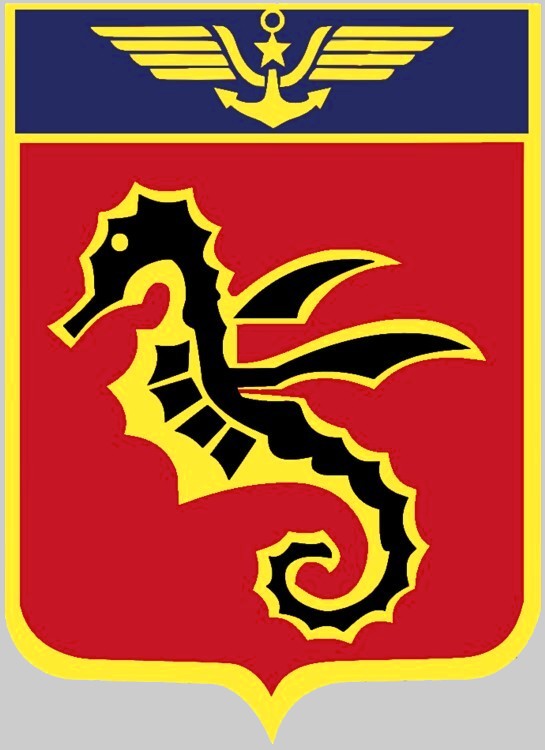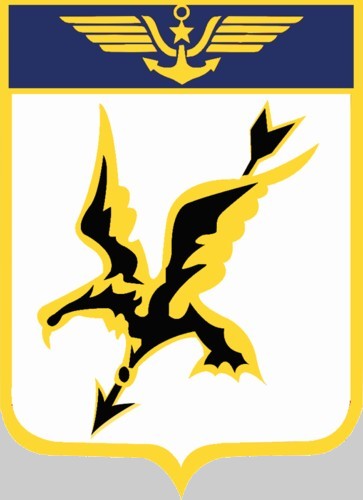 |
|||
|
HOME
|
US Navy -
ships
|
US Navy - air
units
|
USMC - air
units
|
International
Navies
|
Weapon Systems
|
Special Reports |
|||
|
|
|||
|
|
|||
|
French Navy / Marine Nationale Dassault Etendard IV |
|||
|
|
|||
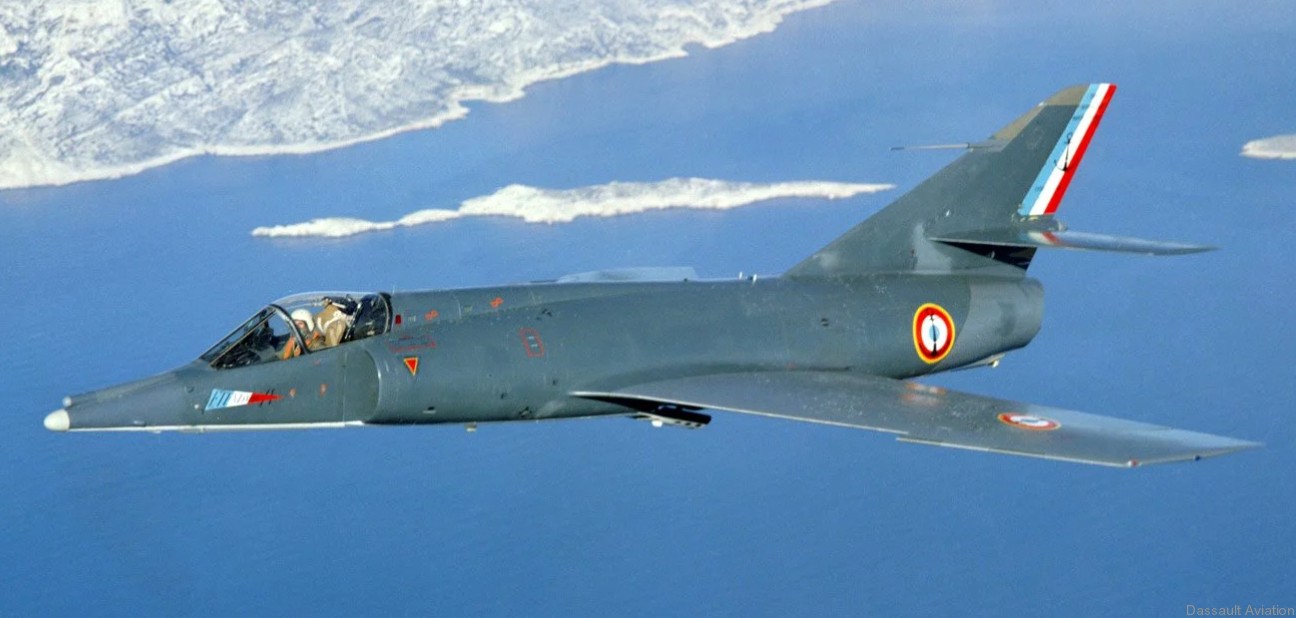 |
|||
|
|
|||
| Units + serials: | |||
|
|||
|
The Dassault Étendard IV is a transonic
carrier-borne strike fighter aircraft developed and manufactured by
French aerospace company Dassault Aviation. It is the first
indigenously designed carrier-capable jet aircraft to be produced in
France. Development of the Étendard originally commenced during the 1950s. Despite not having attracted the interests of either the French Army or any of the NATO air forces, a more powerful proposal had attracted the interest of the French Navy. Accordingly, Dassault developed a navalised demonstrator, which made its first flight on 24 July 1956. Its performance having met with the service's satisfaction, the French Navy ordered the type into production, receiving a total of 69 Étendard IVM fighters, in addition to 21 Étendard IVP, the latter being a specialised aerial reconnaissance variant. The Étendard would serve as the basis for the more advanced Dassault-Breguet Super Étendard. During the 1970s, it had been intended to replace the Étendard IV with a navalised version of the SEPECAT Jaguar, designated as the Jaguar M. However, development of the Jaguar M was terminated and, shortly after, it was announced that the Super Étendard had been ordered in its place. For a time, the Étendard IV was operated alongside its improved model before being progressively withdrawn during the 1980s. In 1991, the fighter models of the type was finally retired from service by its sole operator, while the reconnaissance variant was withdrawn during 2000. The Étendard was a relatively lightweight navalised attack fighter. In service, it was often noted for its popularity with its pilots due to its high level of manoeuvrability. It featured a highly swept wing, which was furnished with double-slotted flaps and spoilers, as well as powered ailerons and leading-edge droop flaps. To take up less room onboard aircraft carriers when being stored, the wings of the Étendard were designed to be foldable. The type was powered by a single SNECMA Atar turbojet engine, which had also powered the French Air Force's Dassault Mirage III. The engine's configuration was broadly similar to that of the Mirage III's powerplant, albeit with the exception of the removed afterburner. In flight, the Étendard was capable of attaining transonic speeds, being only able to exceed the speed of sound when in a dive. The Étendard could be furnished with various equipment to carry out its mission roles, which included attack, photo-reconnaissance, and aerial refueling tanking. In addition to the standard dual 30mm DEFA cannon, various armaments and munitions could be carried on the four wing-mounted hardpoints, such as short range air-to-air missiles, air-to-surface missiles, rocket pods, bombs, and drop tanks. A retractable nose-mounted refueling probe was also fitted. Other optional equipment included a tactical air navigation system (TACAN) receiver and a drogue parachute, the latter of which could be used to assist braking during land operations. A compact Dassault-built Aida radar unit was installed within the aircraft's nose, along with a compact infrared sensor, which could be used for guiding various munitions. Alongside the Aida radar unit, a Swedish-made SAAB bombing computer was added to increase accuracy. The aerial reconnaissance-orientated Étendard IVP was largely similar to the fighter model of the aircraft, but did have some key differences. An arrangement of five OMERA cameras was housed within the aircraft's lengthy nose; furthermore, the ventral bay could also accommodate a number of long-focus cameras in lieu of the cannon armament. While a refuelling probe was also present on reconnaissance aircraft, this was non-retractable due to a lack of available space in the interior of the nose. During December 1961, the French Navy took delivery of their first Étendards. The following year, the type was deployed for the first time aboard both of the service's newly built Clemenceau-class aircraft carriers, the Clemenceau and Foch. The Étendard IVM was in French Navy service for several decades, even following the development of the more capable Super Étendard. The type was gradually relegated to secondary missions in favour of the Super Étendard; as such, it was phased out from active combat roles during 1987. The last examples of the fighter-orientated model were withdrawn during July 1991, the type's final use having been with Squadron 59S, a ship-borne fighter school. Throughout its service life, the Étendard fleet had reportedly flown for a combined 180,000 flight hours, during which 25,300 landings had been conducted. The reconnaissance-focused Étendard IVP outlived its fighter cousin, having remained in active service until 27 July 2000. According to Dassault, by this point, the Étendard had reportedly carried out in excess of 200,000 flight hours. Variants: Étendard IV The prototype powered by a 34.34 kN (7,720 lbf) SNECMA ATAR 101E3, first flown on 24 July 1956 Étendard IVB One prototype fitted with a 49.82 kN (11,200 lbf) thrust Rolls-Royce Avon engine and blown flaps Étendard IVM Single-seat Maritime strike fighter aircraft for the French Navy Étendard IVP Single-seat Photo reconnaissance aircraft for the French Navy Specifications (Étendard IVM): Crew: 1 Length: 14.35 m (47 ft 1 in) Wingspan: 9.6 m (31 ft 6 in) Height: 3.9 m (12 ft 10 in) Wing area: 28.4 m2 (306 sq ft) Empty weight: 5,897 kg (13,001 lb) Gross weight: 8,170 kg (18,012 lb) Max takeoff weight: 10,200 kg (22,487 lb) Powerplant: 1 x SNECMA ATAR 08B turbojet engine, 43.16 kN (9,700 lbf) thrust Maximum speed: 1,099 km/h (683 mph, 593 kn) Range: 3,300 km (2,100 mi, 1,800 nmi) Service ceiling: 15,500 m (50,900 ft) Rate of climb: 100 m/s (20,000 ft/min) Wing loading: 282 kg/m2 (58 lb/sq ft) Armament: Guns: 2 x 30 mm (1.18 in) DEFA 552 cannons with 150 rounds per gun Rockets: 2 x Matra rocket pods with 18x SNEB 68 mm rockets each Missiles: AIM-9 Sidewinder and Matra Magic air-to-air missiles, Nord AS.30 and AS.20 air-to-surface missiles Bombs: 1,360 kg (3,000 lb) of payload on four external hardpoints, including a variety of bombs or Drop tanks source: wikipedia |
|||
| images | |||
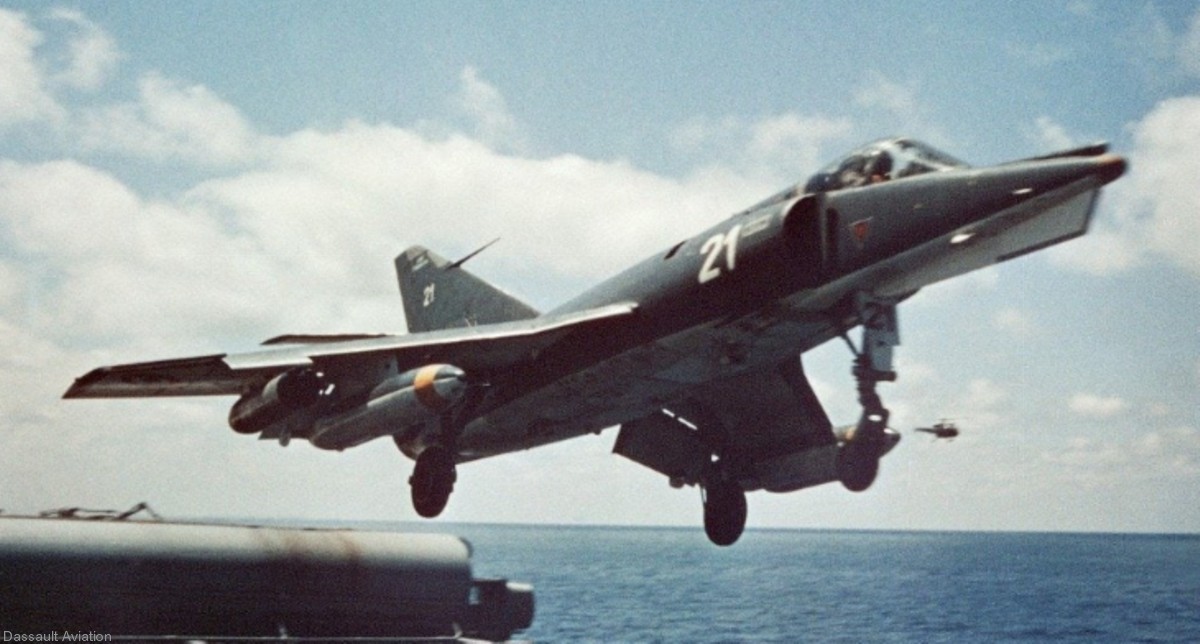 Etendard IVM 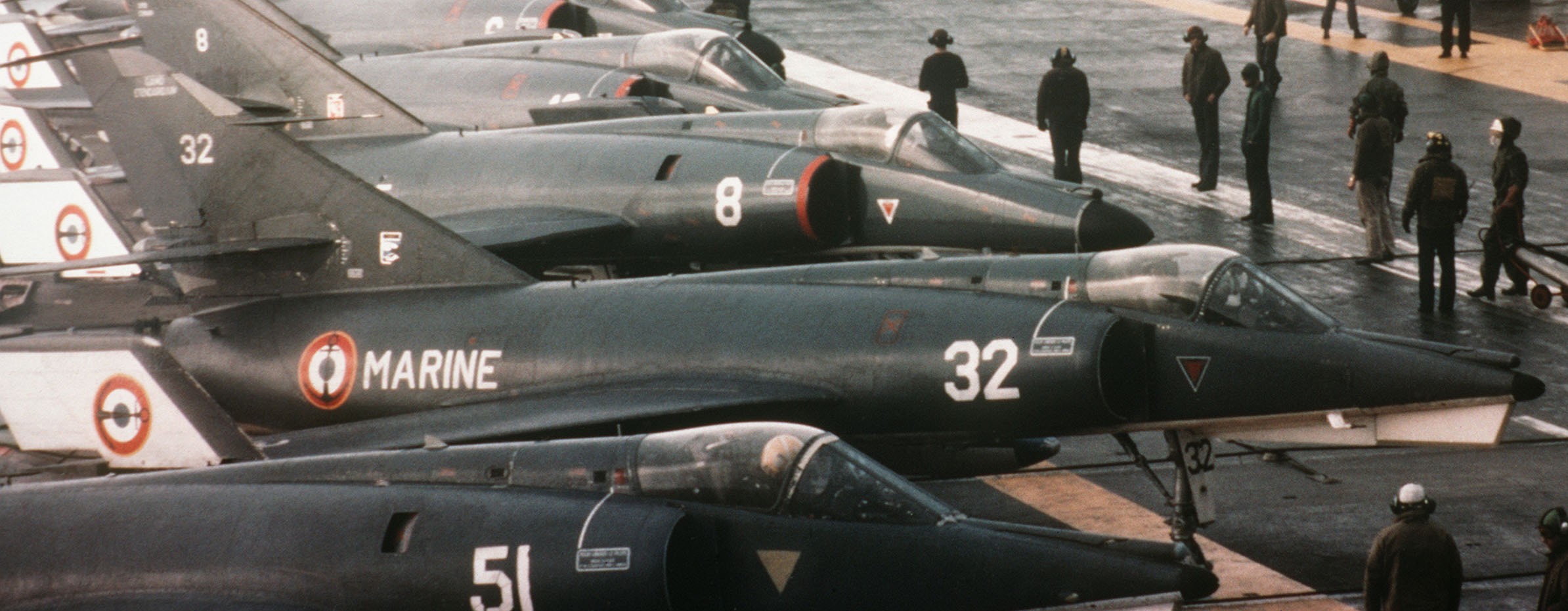 Etendard IVM (32 + 51) aboard the aircraft carríer FOCH 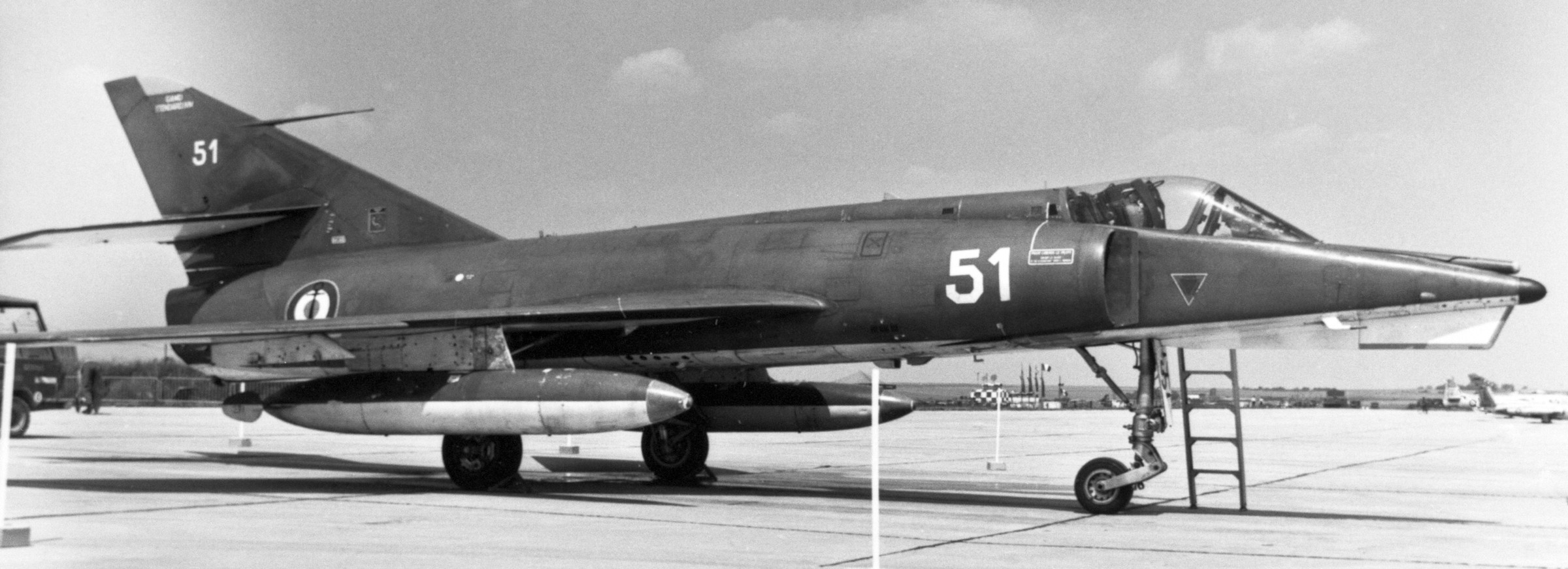 Etendard IVM 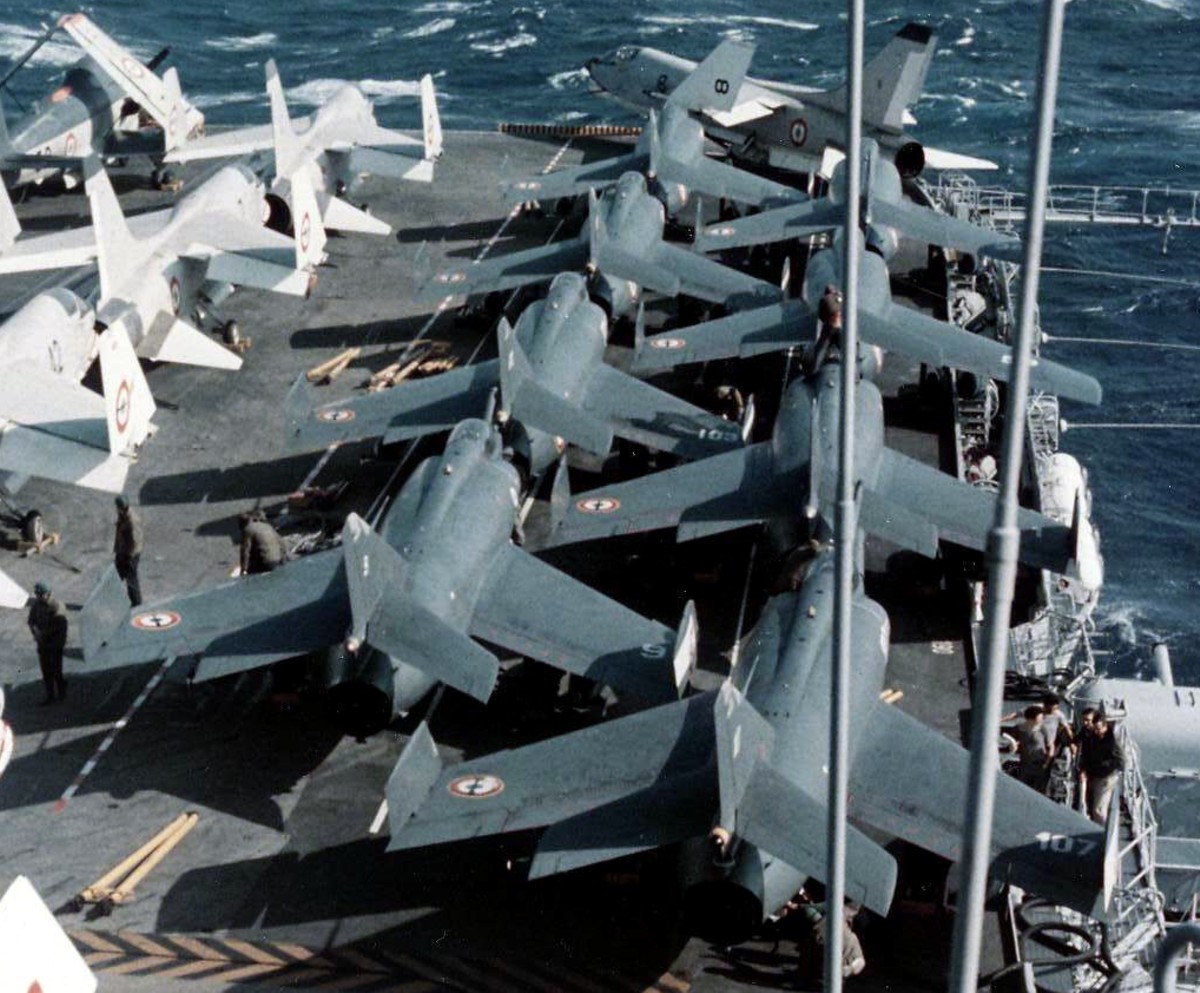 8 Etendard IV's with F-8E Crusaders  Dassault Etenderd IV - 01 |
|||
|
|
|||
|
|
seaforces.org
|
French
Navy start page
| |
